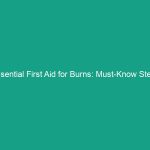Introduction
Good morning team! Today, we’re gathering for an important Toolbox Talk focused on Essential HSE Guidelines: Avoid Critical Risks in Your Toolbox Talk. This topic is vital for maintaining a safe work Environment and ensuring everyone’s well-being. By understanding and implementing these guidelines, you can help prevent accidents and injuries on the job. Let’s dive into why this is crucial for all of us.
Understanding Essential HSE Guidelines
The term Essential HSE Guidelines refers to the fundamental practices and protocols in Health, Safety, and Environment (HSE) that are designed to mitigate risks and protect workers. These guidelines are not merely suggestions; they are essential components of Workplace Safety that can significantly influence your daily operations.
Many employees may think that Safety Guidelines are overly cautious or unnecessary, especially if they have not experienced an incident. However, it is critical to recognize that Safety protocols are backed by statistics and real-world incidents that show the consequences of neglecting Safety Measures.
Key Hazards, Risks, and Safety Considerations
Understanding the key Hazards and risks in your workplace is a crucial part of implementing effective HSE guidelines. Common risks include:
- Slips, Trips, and Falls: One of the most frequent causes of workplace injuries, these can occur due to wet floors, uneven surfaces, or cluttered walkways.
- Hazardous Materials: Exposure to chemicals and other hazardous substances can lead to serious health issues if not properly managed.
- Machine Hazards: Operating machinery without following safety protocols can result in severe injuries or fatalities.
- Ergonomic Risks: Poor workstation setup can lead to musculoskeletal disorders over time.
Ignoring these risks can lead to real-world consequences, from minor injuries that require time off work to severe incidents that can result in loss of life. It’s crucial to stay vigilant and proactive in addressing these hazards.
Best Practices, Procedures, & Actionable Advice
To effectively avoid critical risks, here are some essential Best Practices and Procedures you should follow:
Step-by-Step Safety Procedures
- Conduct Regular Safety Inspections: Schedule weekly or monthly inspections of your worksite to identify any potential hazards.
- Implement Safety Training: Ensure that all employees receive proper training on the use of Personal Protective Equipment (PPE) and safe Operation of machinery.
- Establish Clear Communication: Use signage and verbal communication to ensure all team members are aware of safety protocols and hazards.
- Encourage Reporting: Create an environment where employees feel comfortable reporting safety concerns or near misses without fear of retribution.
For example, consider the case of a construction site where a worker ignored the proper use of safety harnesses. The worker fell from a height, resulting in serious injury. This incident could have been avoided had proper Safety Measures been enforced and adhered to.
Regulations, Standards, and Compliance
Compliance with safety Regulations is not just a legal obligation; it is a moral one. Organizations such as OSHA (Occupational Safety and Health Administration) set forth guidelines that protect workers from hazards. Familiarize yourself with these regulations and ensure that your workplace adheres to them.
Non-compliance can lead to serious consequences, including fines, legal action, and most importantly, injuries or fatalities. Always prioritize compliance to foster a safe working environment.
Employee Engagement & Discussion
Now that we’ve covered the essential guidelines, let’s open the floor for discussion. Here are a few questions to consider:
- What safety challenges have you encountered related to the guidelines we discussed today?
- How can we improve our safety practices in our day-to-day operations?
- Are there any specific training needs you feel would help enhance our safety culture?
Your insights are invaluable in creating a safer workplace, so feel free to share your thoughts!
Conclusion & Key Takeaways
To wrap up, we’ve discussed the importance of Essential HSE Guidelines and how they can help us avoid critical risks in our work environment. Remember, safety is everyone’s responsibility, and applying these practices is essential for protecting yourself and your coworkers.
Let’s commit to making safety a priority in everything we do. Thank you for your attention and your dedication to maintaining a safe workplace. Together, we can create a culture of safety that Benefits everyone!


